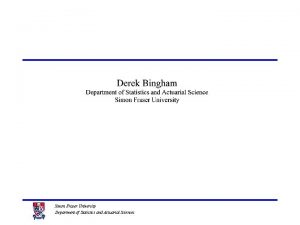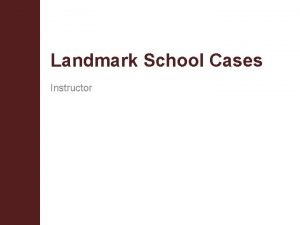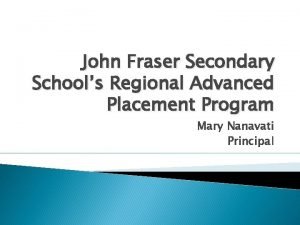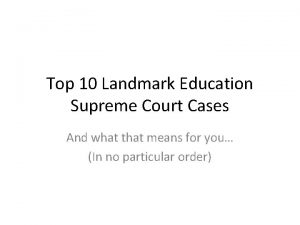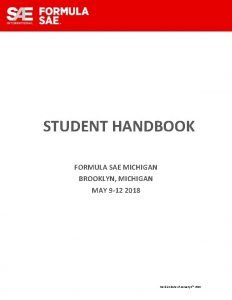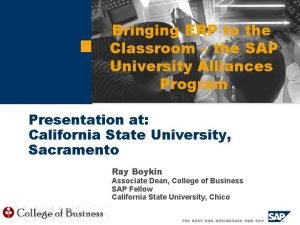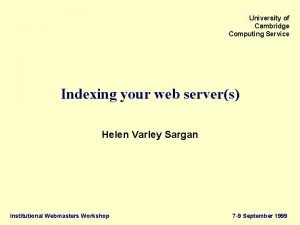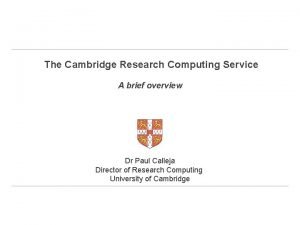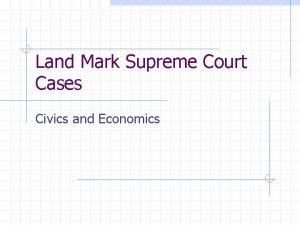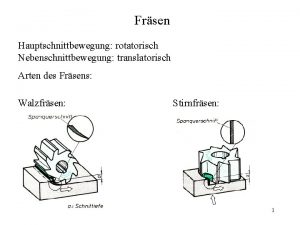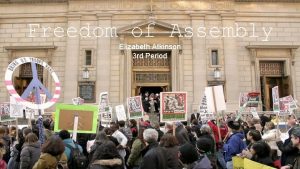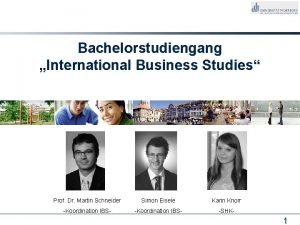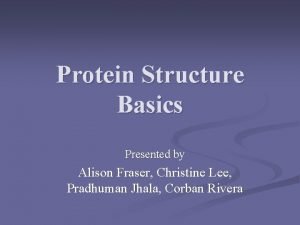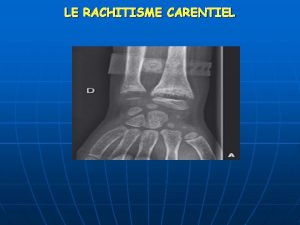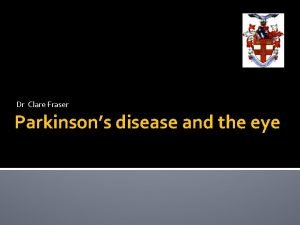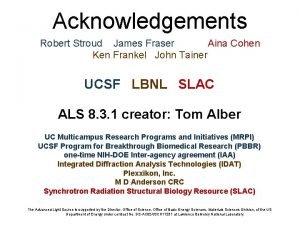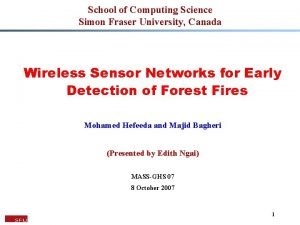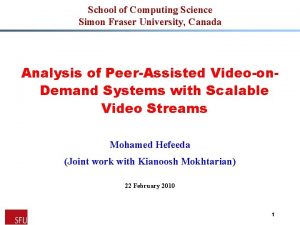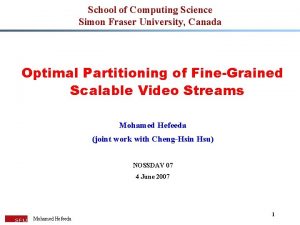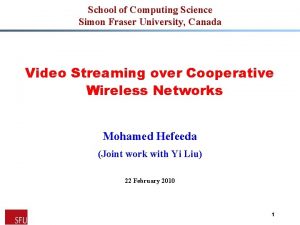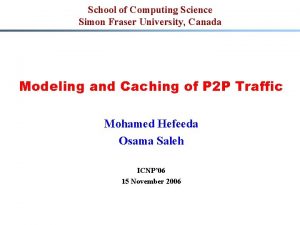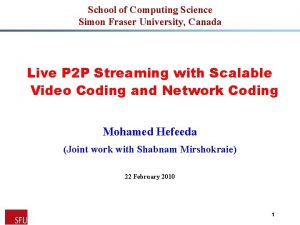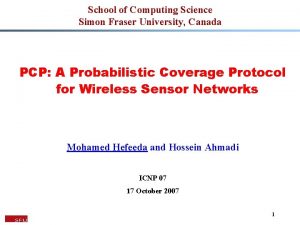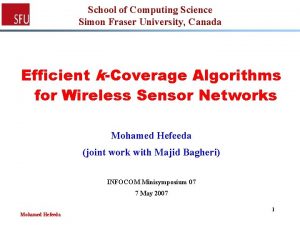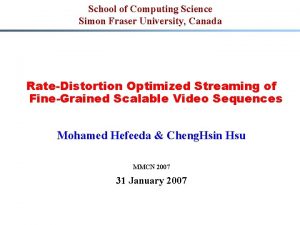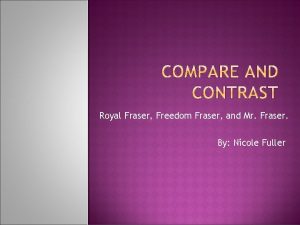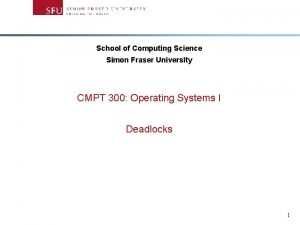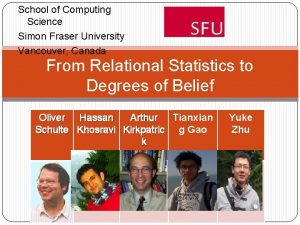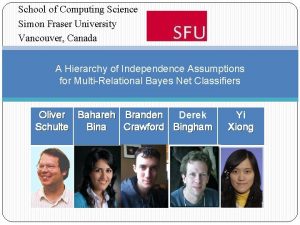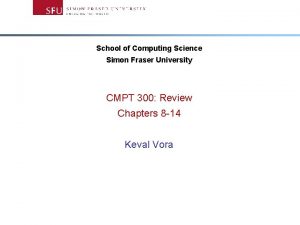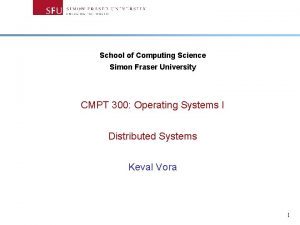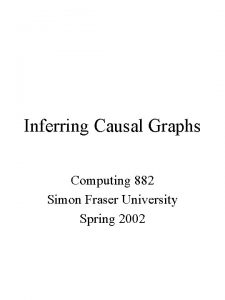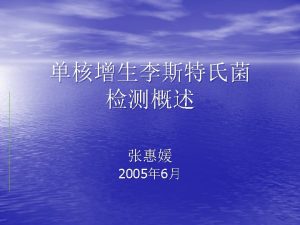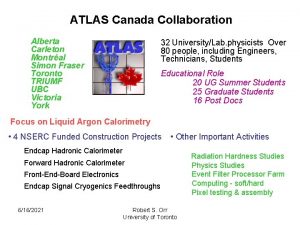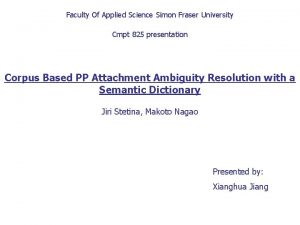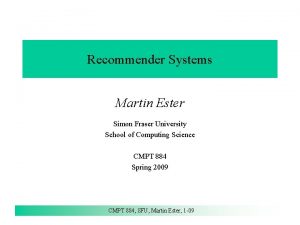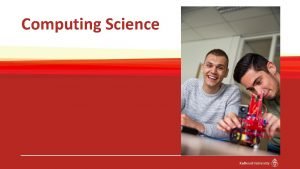School of Computing Science Simon Fraser University Canada























- Slides: 23

School of Computing Science Simon Fraser University, Canada Energy Optimization in Mobile TV Broadcast Networks Mohamed Hefeeda (Joint work with Cheng. Hsin Hsu) 16 December 2008 Mohamed Hefeeda 1

Mobile TV: Market Demand & Potential § Most mobile devices (phones, PDAs, . . . ) are almost full-fledged computers § Users like to access multimedia content anywhere, anytime § Longer Prime Time viewing More business opportunities for content providers § Market research forecasts (by 2011) - 500 million subscribers, 20 billion Euros in revenue § Already deployed (or trial) networks in 40+ countries [http: //www. dvb-h. org] Mohamed Hefeeda 2

Mobile TV § Batterypowered § Mobile, wireless § Small screens, . . . Mohamed Hefeeda 3

Mobile TV: Multiple Technologies § Over (current, 3 G) cellular networks - Third Generation Partnership Project (3 GPP) Multimedia Broadcast/Multicast Service (MBMS) Pros: leverage already deployed networks Cons: Limited bandwidth (<1. 5 Mb/s) • very few TV channels, low quality, and • high energy consumption for mobile devices (they work mostly in continuous mode) Mohamed Hefeeda 4

Mobile TV: Multiple Technologies § Over Dedicated Broadcast Networks - T-DMB: Terrestrial Digital Media Broadcasting • Started in South Korea • Builds on the success of Digital Audio Broadcast (DAB) • Limited bandwidth (< 1. 8 Mbps) - DVB-H: Digital Video Broadcast—Handheld • Extends DVB-T to support mobile devices • High bandwidth (< 25 Mbps), energy saving, error protection, efficient handoff, … • Open standard - Media. FLO: Media Forward Link Only • Similar to DVB-H, but proprietary (Qualcomm) Mohamed Hefeeda 5

Energy Saving for Mobile TV Receivers Bit Rate R Burst Off r 1 Time § This is called Time Slicing - Supported (dictated) in DVB-H and Media. FLO - Performed by base station to save energy of mobile receivers - Also enables seamless hand off § Need to construct Burst Transmission Schedule Mohamed Hefeeda 6

Burst Transmission Schedule Problem Bit Rate R Frame p Time § Easy IF all TV channels have same bit rate - Currently assumed in many deployed networks • Simple, but not efficient (visual quality &bw utilization) • TV channels broadcast different programs (sports, series, talk shows, …) different visual complexity/motion Mohamed Hefeeda 7

The Need for Different Bit Rates § Encode multiple video sequences at various bit rates, measure quality 10 d. B § Wide variations in quality (PSNR), as high as 10— 20 d. B § Bandwidth waste if we encode channels at high rate Mohamed Hefeeda 8

Burst Scheduling with Different Bit Rates Bit Rate R Time Frame p § Ensure no buffer violations for ALL TV channels - Violation = buffer underflow or overflow § Ensure no overlap between bursts Mohamed Hefeeda 9

Burst Scheduling with Different Bit Rates § Theorem 1: Burst Scheduling to minimize energy consumption For TV channels with arbitrary bit rates is NP-Complete § Proof Sketch: - We show that minimizing energy consumption is the same as minimizing number of bursts in each frame - Then, we reduce the Task Sequencing with release times and deadlines problem to it § We can NOT use exhaustive search in Real Time Mohamed Hefeeda 10

Solution Approach § Practical Simplification: - Divide TV channels into classes - Channels in class c have bit rate: - E. g. , four classes: 150, 300, 600, 1200 kbps for talk shows, episodes, movies, sports - Present optimal and efficient algorithm (P 2 OPT) § For the General Problem - With any bit rate - Present a near-optimal approximation algorithm (DBS) • Theoretical (small) bound on the approximation factor § All algorithms are validated in a mobile TV testbed Mohamed Hefeeda 11

P 2 OPT Algorithm: Idea § § § Assume S channels: Also assume medium bandwidth Compute the optimal frame length Divide into bursts, each bits Then assign bursts to each TV channel s Set inter-burst distance as Mohamed Hefeeda 12

P 2 OPT: Example § Four TV channels: § Medium bandwidth: § is divided into 8 bursts § Build binary tree, bottom up § Traverse tree root-down to assign bursts Mohamed Hefeeda 13

P 2 OPT: Analysis § Theorem 2: P 2 OPT is correct and runs in . - i. e. , returns a valid burst schedule iff one exists - Very efficient, S is typically < 50 § Theorem 3: P 2 OPT is optimal when - Optimal = minimizes energy consumption for receivers - b is the receiver buffer size Mohamed Hefeeda 14

P 2 OPT: Empirical Validation § Complete open-source implementation of testbed for DVB-H networks: base station, web GUI, analyzers Mohamed Hefeeda 15

P 2 OPT: Empirical Validation § P 2 OPT is implemented in the Time Slicing module Mohamed Hefeeda 16

P 2 OPT: Correctness § Setup: Broadcast 9 TV channels for 10 minutes - 4 classes: 2 @ 64, 3 @ 256, 2 @ 512, 2 @ 1024 kbps - Receiver Buffer = 1 Mb - Collect detailed logs (start/end of each burst in msec) - Monitor receiver buffer levels with time - Compute inter-burst intervals for burst conflicts Mohamed Hefeeda 17

P 2 OPT: Correctness Bursts of all TV Channels TV Channel 1 § Never exceeds 1 Mb, nor goes below 0 § No overlap, all positive spacing § And P 2 OPT runs in real time on a commodity PC Mohamed Hefeeda 18

P 2 OPT: Optimality § Compare energy saving against absolutemaximum - Max: broadcast TV channels one by one, freely use the largest burst max off time max energy saving - P 2 OPT: broadcast all TV channels concurrently Mohamed Hefeeda 19

P 2 OPT: Quality Variation § Does encoding channels with power of 2 increments bit rate really help? § We encode ten (diverse) sequences using H. 264: - Uniform: all at same rate r (r varies 32 -- 1024 kbps) - P 2 OPT: at 3 different bit rates Mohamed Hefeeda 20

P 2 OPT: Quality Variation § Quality gap < 1 d. B P 2 OPT is useful in practice Mohamed Hefeeda 21

Conclusions § Energy saving: critical problem for mobile TV § TV channels should be encoded at different bit rates - Better visual quality, higher bandwidth utilization - BUT make burst transmission scheduling NP-Complete § Proposed a practical simplification - Classes of TV channels with power of 2 increments in rate - Optimal algorithm (P 2 OPT) and efficient § General Problem - Near-optimal algorithm (DBS): approx factor close to 1 for typical cases § Implementation in real mobile TV testbed Mohamed Hefeeda 22

Thank You! Questions? ? § Details are available in our papers at: http: //nsl. cs. sfu. ca/ Mohamed Hefeeda 23
 Simon fraser university statistics
Simon fraser university statistics Bethel school district #43 v. fraser (1987)
Bethel school district #43 v. fraser (1987) John fraser ap program
John fraser ap program Bethel school district #43 v. fraser
Bethel school district #43 v. fraser My favourite subject
My favourite subject Conventional computing and intelligent computing
Conventional computing and intelligent computing Graduate school of engineering science osaka university
Graduate school of engineering science osaka university Is ucw a dli
Is ucw a dli Fsae michigan
Fsae michigan Sap university
Sap university University of cambridge computing service
University of cambridge computing service Cambridge platform
Cambridge platform Brainspoting
Brainspoting Brinkibon v stahag stahl
Brinkibon v stahag stahl Bethel v fraser summary
Bethel v fraser summary Wendeschneidplatte topfscheibe
Wendeschneidplatte topfscheibe Bethel v fraser oyez
Bethel v fraser oyez C dalrymple-fraser
C dalrymple-fraser Wiwi prüfungstermine upb
Wiwi prüfungstermine upb Munro fraser 5 point plan
Munro fraser 5 point plan Alison fraser
Alison fraser Aspect en bouchon de champagne rachitisme
Aspect en bouchon de champagne rachitisme Clare fraser
Clare fraser James fraser md mph
James fraser md mph
